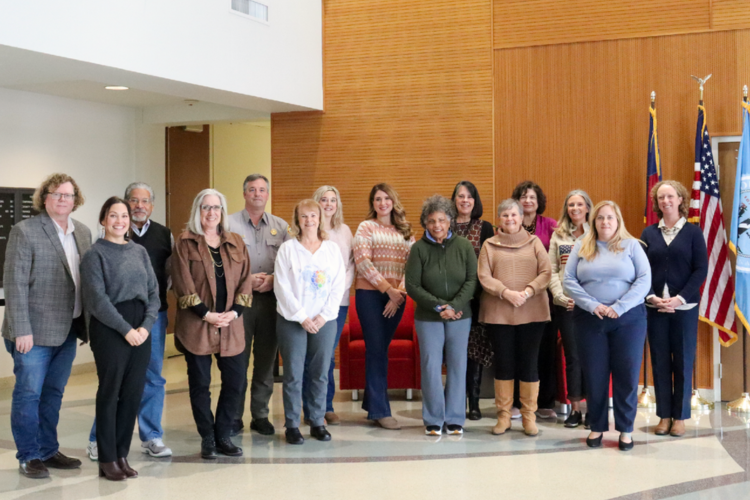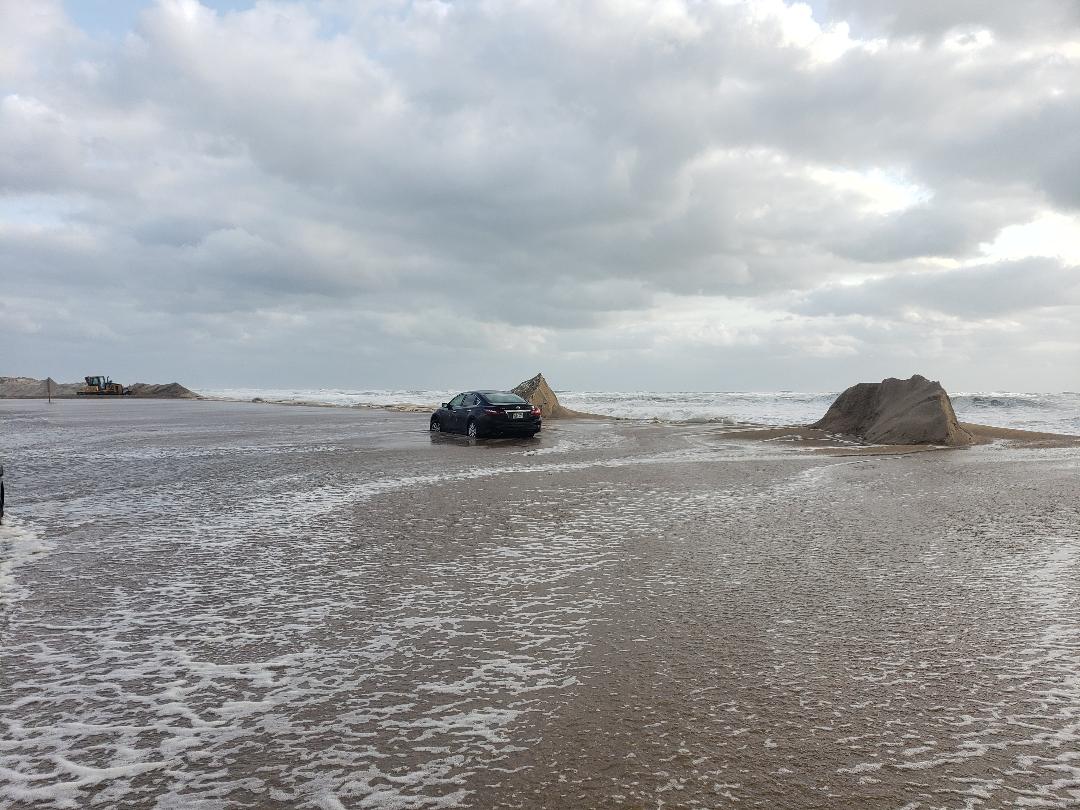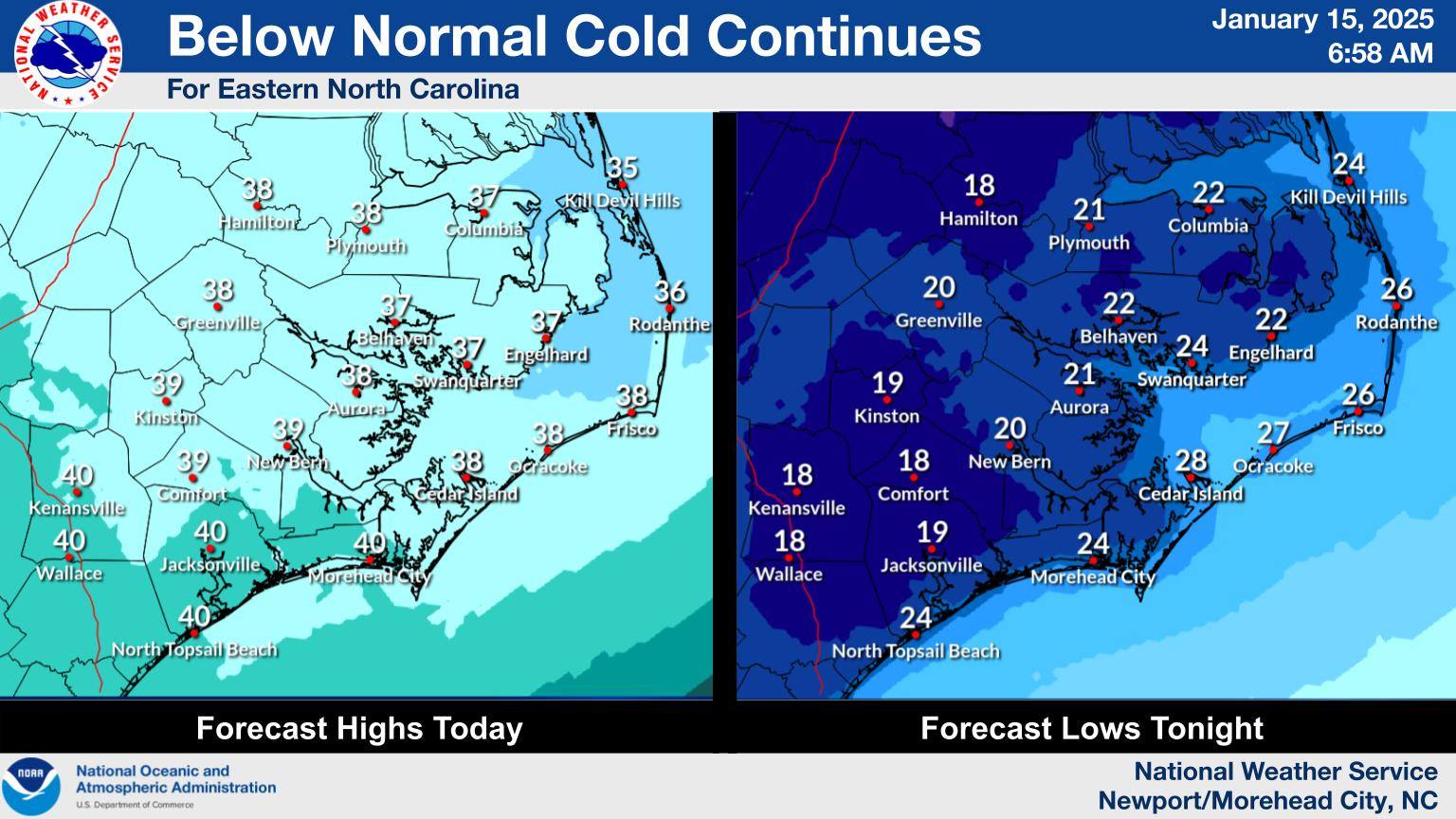Long-Stalled Dredging at Hatteras Inlet Scheduled for Late January

With a freshly-signed agreement in hand, the Army Corps of Engineers next week finally will be able to do long-stalled maintenance dredging in Hatteras Inlet at the South Ferry Channel.
That was good news to members of the Dare County Waterways Commission, who said at their meeting in Manteo on Monday that vessels have lately been bumping and grounding in the channel.
“You see how quickly it changes,” said Commission Chairman Steve “Creature” Coulter. “Last month it was okay. This month it’s not.”
Brent Johnson, project manager for Dare County Grants and Waterways, told commissioners that a new survey of the channel had been completed on Jan. 9 and the Corps’ dredge Merritt was preparing to start the project this past weekend. But the dredge was called away unexpectedly on Friday to deal with an emergency project on the southern coast.
“So we were a day away from having the stars aligned,” Johnson said after the meeting in a telephone interview.
But this time the delay will be brief. The Merritt is expected to return, he said, by about Jan. 23 to start work clearing the channel.
The annual Memorandum of Agreement (MOA) between the state of North Carolina, Dare County, and the Army Corps of Engineers was supposed to have been ready before the planned maintenance dredging in the fall. But when preparations began for the South Ferry Channel project, it was discovered that the state had mistakenly allowed the permit to lapse. Even though steps were immediately taken to renew the document, the new permit was not finalized until Jan. 7.
Johnson said that for the next MOA, he will seek to extend it to 10 years. And when it comes time to renew the two-year Coastal Area Management Agency (CAMA) permit, he said, he also will try to secure a permit with a longer time span, albeit he wouldn’t be expecting a decade-long environmental permit.
In another update, Johnson said that the contract authorizing the design for a state-owned hopper dredge was signed in December before the holidays. The planned dredge, which will take about two years to complete, will be expected to be similar to the those used by the Corps, and will be permitted initially only in Oregon Inlet, Johnson said. Work in other waterways, such as Hatteras Inlet, he said, would be able to be done with a modified permit. But some jobs may be appropriate only for a different style dredge, such as a pipeline, he added.
John Abel, N.C. Department of Transportation bridge program manager, also provided updates on several significant projects on Ocracoke Island. As far as the ongoing work on a sheet pile wall at the island’s north end being done to protect the ferry channel basin, he said that the contractor is finishing up driving the sheet pile. Once that is completed, a tie-back system that holds the sheeting in place will be installed, followed by sandbag placement at the end of the wall. After the winds shift south in the spring, the contractor will return for another six to eight weeks to install the concrete caps along the wall, and reconstruct the dunes and plant dune grass.
Meanwhile, Abel said that the environment assessment (EA) for a proposed “five-finger” groin project near the same location is being finalized. Once the document is released, there will be a 30-day public comment period. The project would also require a major CAMA permit, as well permits from other agencies, including the Army Corps and the state Department of Environmental Quality.
The Ferry Division has been working with engineering firm Moffatt & Nichol and the National Park Service to design and permit the groin project. A cost estimate would be available after the project is permitted, likely by late summer, Abel said.
Abel explained in an interview that the groin project would slow sand travel, allowing it to build the area behind the groin. It would be built of steel sheeting that varied in length from about 100 feet to 230 feet, with steel piles between them.
Also, Abel said that a feasibility study on a long-term solution for the hot spot on Highway 12 on Ocracoke is expected to be released within weeks. The study will detail options, which are expected to include beach nourishment and/or bridging. He added that funding the project could be challenging because it would not easily meet the NCDOT criteria for construction.
In Manteo, dredging the clogged channel in Roanoke Sound at the mouth of Shallowbag Bay will be delayed for another winter. Johnson said that tests of material in the channel found slightly elevated levels of “total chromium” that pushed it above allowable limits, according to information provided by the county’s consultant Aptim Coastal Planning & Engineering of North Carolina Inc. Aptim plans to hire a firm to conduct further testing to determine, he said, whether the chemical element would present a health risk if it was used as fill. Once the analysis is completed, likely within 60 days, a determination will be made on a disposal area for the fill.
Although the state had provided about $2 million in 2018 to do the work, the dredge project has been stymied by the lack of a proper site to dispose of the dredged material. It has also been limited to a seasonal dredging window that restricts work during spring and summer sea turtle nesting. Johnson said that it has been determined that the material will be put on a barge and then loaded onto a truck, which will then deposit it at either the county landfill near East Lake, or at the county airport on Roanoke Island.
The problem area of the channel is located at the intersection of the Roanoke Sound and the entrance to Shallowbag Bay into Manteo harbor. Although the shoaling has created some navigational concerns for smaller vessels, it has been a major problem for the 69-foot Elizabeth II, the representative 16th-century sailing ship docked alongside Roanoke Island Festival Park in Dough’s Creek. The state-owned wooden vessel, which draws eight feet, cannot get out of the harbor for its annual maintenance at the state shipyard in Manns Harbor until the channel is dredged. The last time the ship was hauled out was January 2016.
Attendees at the meeting, held at the Dare County Administrative Building, included Waterways Commission members Dan Oden, Natalie Kavanaugh, Michael Flynn and Danny Couch, as well as vice-chairman Ernie Foster and Chairman Coulter and representatives from the Army Corps, the Coast Guard and NCDOT. Member Kermit Skinner was absent. The next meeting is scheduled for Feb. 10 at 7 p.m. at the Fessenden Center in Buxton.













